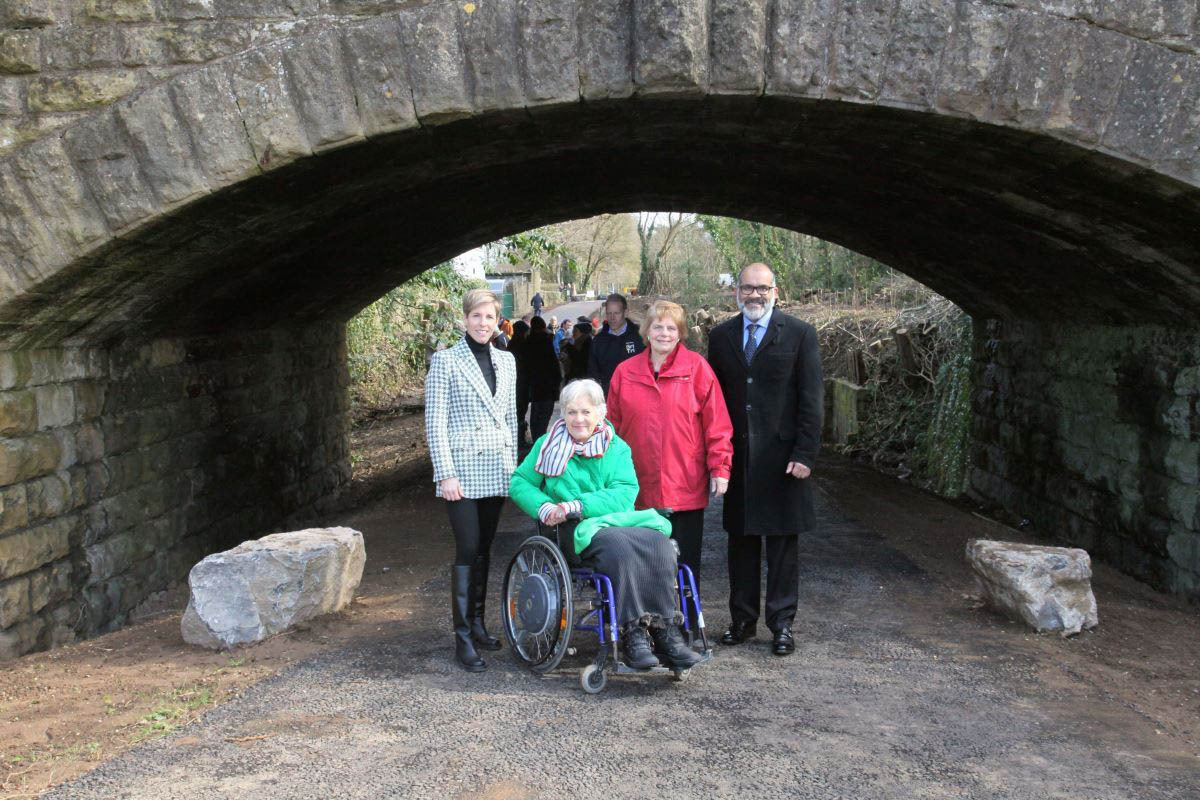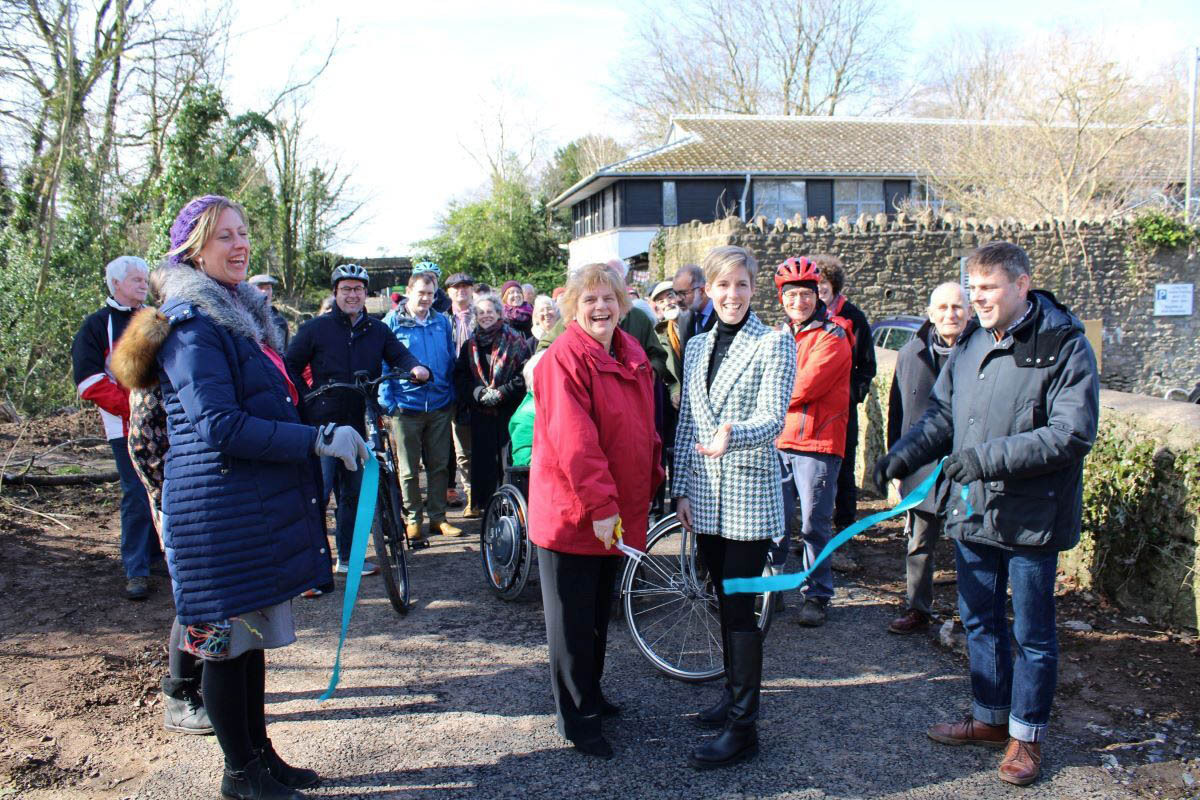
Left to right: National Highways’ Head of the Historical Railways Estate programme, Hélène Rossiter; Former HM Lord-Lieutenant of Somerset, Annie Maw; Leader of Mendip District Council, Cllr Ros Wyke; and HM Lord-Lieutenant of Somerset, Mr Mohammed Saddiq.
On a cold March morning, a small crowd gathered in Shepton Mallet to mark the opening of a very short section of cyclepath. To an outside observer it will have seemed a pleasant but unremarkable event – a welcome addition to local infrastructure, but not much more. In fact, it could prove quite significant.
A clue to the significance of the occasion lies in the time it took to achieve this small step for active travel. It is well over 10 years since the town council first put forward proposals for a link between housing estates to the east of the town and the retail park and bus station to the west. The route allows residents to pass safely under the busy A371 in a disused railway cutting. Why did it take so long to achieve?
The delay was not down to those building the path: I asked the contractor how long the work had taken. “About two weeks”, she said.
The delay was not down to local opposition: there were no protestors squatting in trees or chaining themselves to the railings. There were no petitions from angry residents or battles over compulsory purchase. Citizens’ groups, cycling charities, the town council and district council were all united in support of the plan. Moreover, the district council owned all the land in question.
Part of the blockage was simply the bureaucracy of the planning system. Time after time the planners would delay a decision, refer the proposal back for further information, or seek a comment from another official. The focus was always on the process, not on getting things done.
A breakthrough came when Mendip District Council realised that it was able to use its permitted development powers to put such work in hand without formally seeking planning permission. It has used this approach subsequently on other sections of path and has achieved more in 12 months than in the past two decades. It has also streamlined the design process by using the charity Greenways and Cycleroutes, rather than road traffic consultants. Computer Aided Design (CAD) drawings are not needed for a stone-dust path across open fields.
The most significant feature of the opening, however, was the presence of Hélène Rossiter, head of the Historical Railways Estate (HRE). Until recently, this little-known agency of the Department for Transport seemed to go out of its way to court bad publicity. Charged with responsibility for some 3,000 redundant railway structures, it ignored their potential to be repurposed for public benefit, concentrating instead on minimising cost and risk. Until rebranded, it even called itself ‘the Burdensome Estate’.
The most egregious recent example of HRE’s wilful disregard for wider public benefit was the infilling of Great Musgrave Bridge in Cumbria. This was blocked with hundreds of tons of concrete, despite local ambitions to restore the line for use by a heritage railway. HRE has been forced by the local council to remove the concrete, though still managed to upset local campaigners by refusing to donate some of the rubble to help surface a car park.
Against that background, the presence of the head of HRE at the opening of this short path was very significant. Progress was only possible because the agency has granted a licence to allow the path to pass under the bridge that it still owns. Only a couple of years ago, as we reported, HRE was threatening to block the project, in an attempt to offload its responsibilities for the bridge onto the local council. Now it sees itself as contributing to a collaborative effort to improve facilities.
At the opening, Hélène Rossiter spoke in terms of partnership and seeking wider public benefit. “This is a pivotal point in our determination to make multi-user paths part of our everyday life”, she said. It was clear from conversations with her team that HRE now recognise the importance of the active travel agenda, and how the assets they maintain can contribute to it.
This small step forward in Somerset could signal a step change in thinking at the Department for Transport. It’s badly needed, so let’s hope so.

Hélène Rossiter and Cllr Ros Wyke cutting the ribbon




